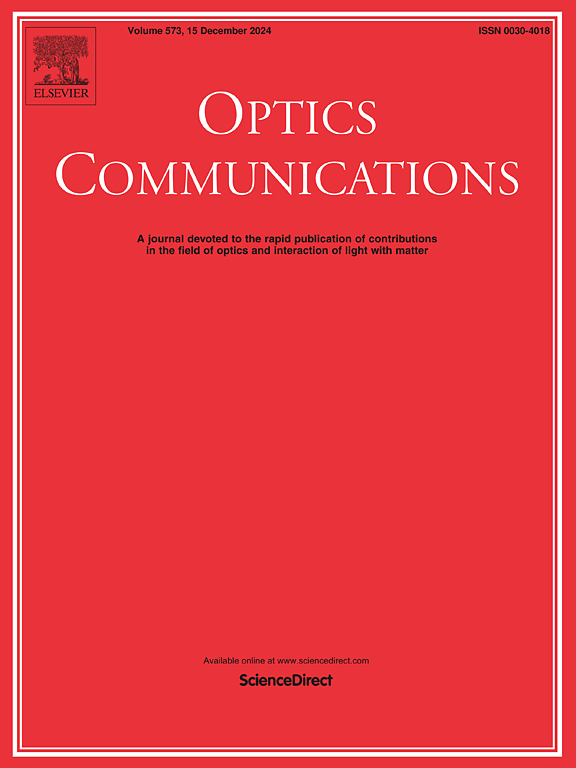Exciting topological edge states by using plane waves in valley-Hall photonic crystal slabs
IF 2.2
3区 物理与天体物理
Q2 OPTICS
引用次数: 0
Abstract
Topological edge states are commonly excited by dipole sources or waveguide couplers. In practice, however, such near-field excitations are unfavorable and the simplest way is to use far-field sources. In this report, we theoretically show that the topological edge modes inside the light cone can be directly excited by plane waves via momentum matching, taking valley-Hall topological photonic crystal slabs as examples. Due to the field distributions and mode symmetries, the edge states show different excitation behaviors. One of the edge modes behaves as symmetry-protected bound states in the continuum (BIC) and is excited only by oblique incidence, the Q-factor of which diverges to infinity for normal incidence and drastically decreases for the increase of incident angle. The other one, however, can be excited by far-field for arbitrary incident angle, which does not show the influence on the magnitude of Q-factor. By changing the incident angle, the resonant wavelengths of both modes are tunable and they are determined by the edge bandstructure. Due to the simple excitation scheme and high Q-factors of excited edge states, this proposal will find practical applications, including efficient frequency conversion, sensing, slow light, and optical communications.
利用谷-霍尔光子晶体板中的平面波激发拓扑边缘态
拓扑边缘态通常由偶极子源或波导耦合器激发。但实际上,这种近场激发是不利的,最简单的方法是使用远场源。在本报告中,我们以山谷-霍尔拓扑光子晶体板为例,从理论上证明了光锥内的拓扑边缘模式可以通过动量匹配被平面波直接激发。由于场分布和模式对称性的不同,边缘态表现出不同的激发行为。其中一种边缘模表现为连续体中受对称保护的束缚态(BIC),只在斜入射时被激发,其 Q 因子在正常入射时发散为无穷大,并随着入射角度的增加而急剧下降。而另一种共振则可以在任意入射角度下被远场激发,对 Q 因子的大小没有影响。通过改变入射角,两种模式的谐振波长都是可调的,它们由边缘带状结构决定。由于激发方案简单,且边缘激发态的 Q 因子较高,该方案将在高效频率转换、传感、慢光和光通信等领域得到实际应用。
本文章由计算机程序翻译,如有差异,请以英文原文为准。
求助全文
约1分钟内获得全文
求助全文
来源期刊

Optics Communications
物理-光学
CiteScore
5.10
自引率
8.30%
发文量
681
审稿时长
38 days
期刊介绍:
Optics Communications invites original and timely contributions containing new results in various fields of optics and photonics. The journal considers theoretical and experimental research in areas ranging from the fundamental properties of light to technological applications. Topics covered include classical and quantum optics, optical physics and light-matter interactions, lasers, imaging, guided-wave optics and optical information processing. Manuscripts should offer clear evidence of novelty and significance. Papers concentrating on mathematical and computational issues, with limited connection to optics, are not suitable for publication in the Journal. Similarly, small technical advances, or papers concerned only with engineering applications or issues of materials science fall outside the journal scope.
 求助内容:
求助内容: 应助结果提醒方式:
应助结果提醒方式:


